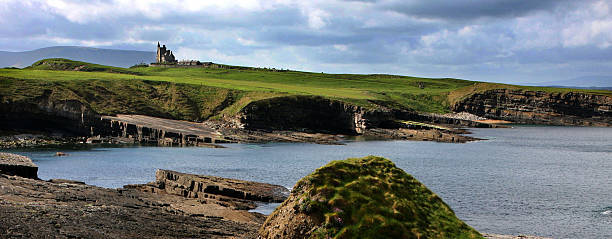The Loch Ness Monster (Nessie) is a mystical creature that is said to live in Loch Ness in the Scottish Highlands. The legend has been passed down for centuries and is known to many people around the world. The Loch Ness Monster has had a major impact on Scottish culture and tourism, and its existence evokes much mystery and romance.
Origin of the Loch Ness MonsterThe legend of the Loch Ness Monster dates back to the 6th century, when St. Columba reportedly saw a monster living in the lake during a visit to Loch Ness.Ancient mythology The first recorded sighting of the Loch Ness Monster is by St Columba, who saw the monster about to attack a man and used his divine powers to fend it off, a story that epitomizes the monster’s fearsomeness and the saint’s courage.Modern sightings The 20th century saw a surge in sightings of the Loch Ness Monster. In the 1930s, a photograph was published of an unknown object floating on the surface of the loch, attracting worldwide interest. This “Photograph No. 1” sparked further investigation and debate.Monster CharacteristicsThe Loch Ness Monster is usually depicted as a large creature with a long neck, and many sightings have described it as having a dinosaur-like appearance, occasionally popping its head out of the water of the loch.Description of appearance Witnesses have described the Loch Ness Monster as a large creature with a long neck and small head, several metres in length, and a undulating back. This distinctive shape is thought to resemble that of a plesiosaur, a type of dinosaur.Biology and behavior There is much debate about the biology of the Loch Ness Monster. It is unclear whether he is carnivorous or herbivorous, or what role he plays in the lake’s ecosystem, as there is no clear evidence. However, sightings indicate that he primarily lives underwater, occasionally emerging to the surface.Research and Scientific ApproachThere are many investigations and research projects underway to discover whether the Loch Ness Monster exists, and in particular, scientists are using technology to try to discover what the monster really is.Research projects In the 2000s, scientists carried out a project to sample the waters of Loch Ness and conduct DNA analysis in an attempt to look for clues as to the existence of the monster by examining the DNA of the lake’s creatures, but failed to find any clear evidence.Impact on tourism The legend of the Loch Ness Monster has had a major impact on the tourism industry. Many tourists visit the area every year in search of the monster, supporting the local economy. There are numerous museums and souvenir shops dedicated to the monster in the area, making it an established tourist destination.The cultural significance of the Loch Ness MonsterThe Loch Ness Monster is deeply rooted in Scottish culture, its mystical qualities having inspired many stories and works of art.Folklore and Stories Legends about monsters feature heavily in Scottish folklore, and the stories they tell us about the interactions they have with people and the morals they teach. These tales are an enriching part of the local culture.Arts and media The Loch Ness Monster has inspired many films, books and works of art, and monster-themed artwork has become part of Scottish identity and is recognised internationally.ConclusionThe Loch Ness Monster is a mystical Scottish legend that has been passed down for centuries.Its existence symbolizes the power of nature and human curiosity, making it a fascinating subject for many people. Despite the advances being made in scientific approaches, the monster’s existence remains a mystery, but its legend lives on in people’s minds and has a profound influence on Scottish culture. Loch Ness will continue to attract many explorers and tourists for many years to come.
